Fiona Grady is an artist who lives and works in London. Her colourful geometric artworks range from smaller pieces through to large-scale architectural interventions, all changing with the light of day, reflecting the passing of time, memory and experience to create ambient environments.
She was recently awarded Developing Your Creative Practice funding from Arts Council England which allowed her to incorporate stained glass as part of her practice. She has been commissioned worldwide by organisations and institutions including Pitzhanger Manor & Gallery, Canary Wharf Group, ITV, Heals London, Walthamstow Wetlands Visitor Centre, British Land, Watts Gallery Artists’ Village, Kensington + Chelsea Art Week, NHS Nightingale Projects, and Kensington and Chelsea Council.
Court Spencer caught up with her whilst she was in Leeds to find out more about her practice, what she’s working on and her plans for the future.
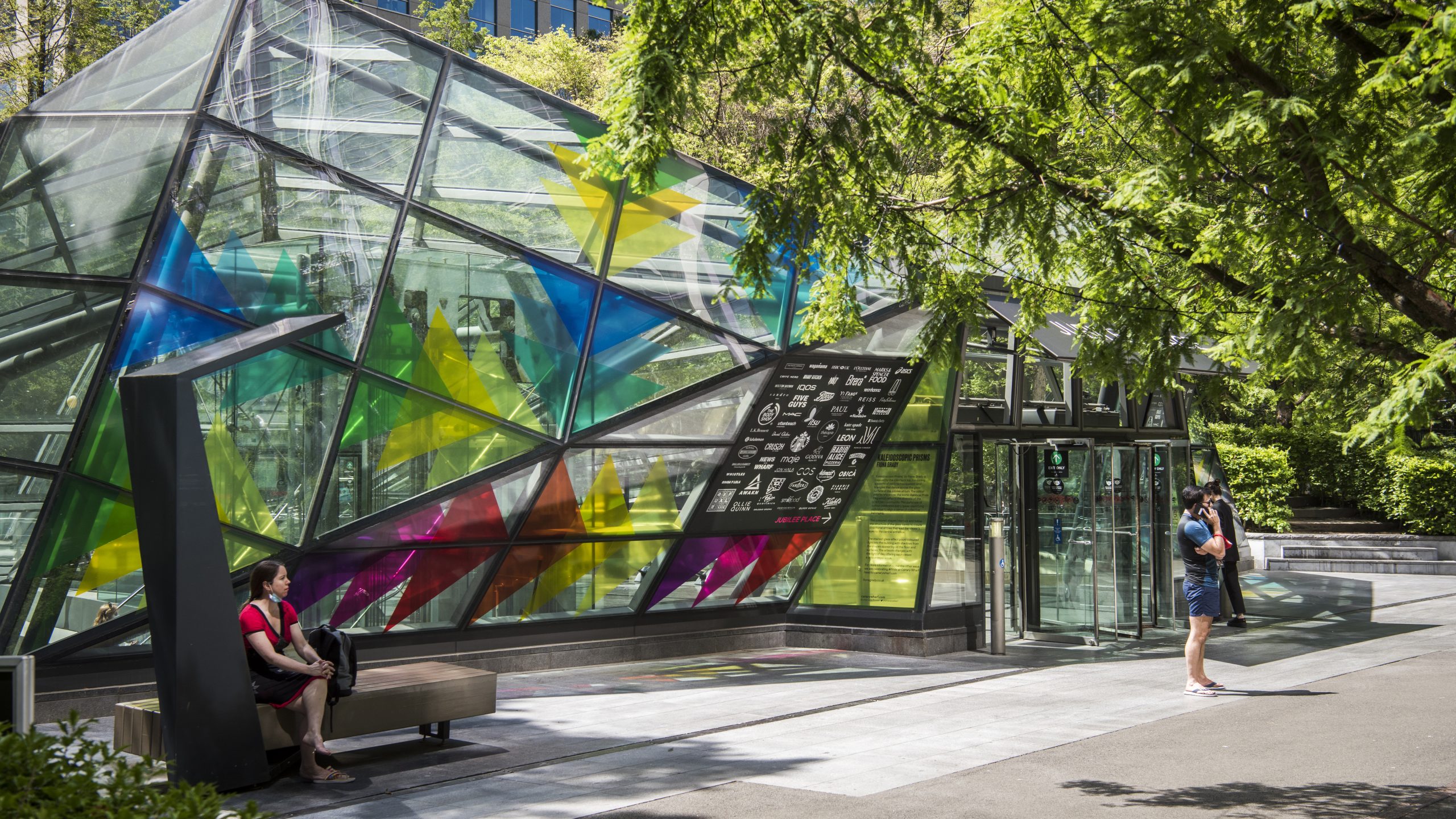
Kaleidoscopic Prisms, 2021-23, Site-specific vinyl window installation. Created for Jubilee Place, Canary Wharf, London. (Photo credit: Sean Pollock © Canary Wharf Group, exterior image)
Court: Hello! So nice to see you. As we’re here in Leeds, where you grew up, I was hoping we could start with a bit about your childhood. I noticed on your lovely new website that you mention being born into a family of mathematicians. Could you tell us a bit about your younger years and your journey into the arts?
Fiona: I’ve always loved art. On both sides of the family there are mathematicians which I think feeds into my sense of logic and seeking balance in my work. I didn’t have many examples of artists around me growing up so it was hard to imagine it as a career. But my parents were always very supportive taking me to galleries and encouraging my interest when I told them I wanted to study art at university.
Court: And what was your university experience like?
Fiona: I really enjoyed university for the freedom it gave me, and the opportunity to spend time exploring ideas. I studied BA Fine Art at the University of Wales in Cardiff (now Cardiff Met) specialising in printmaking. The course was quite traditional and my work was really different to my peers, but that helped to strengthen my resolve in my practice. Although challenging at times, it really benefitted me in the long run. After my BA, I took a couple of years out living and working in Manchester while I saved up for an MA in Fine Art. I moved to London on 2010 to study MA Fine Art at the University of Arts in Wimbledon. The course was only a year but it was a great way to launch my career in London and I made some amazing friends too.
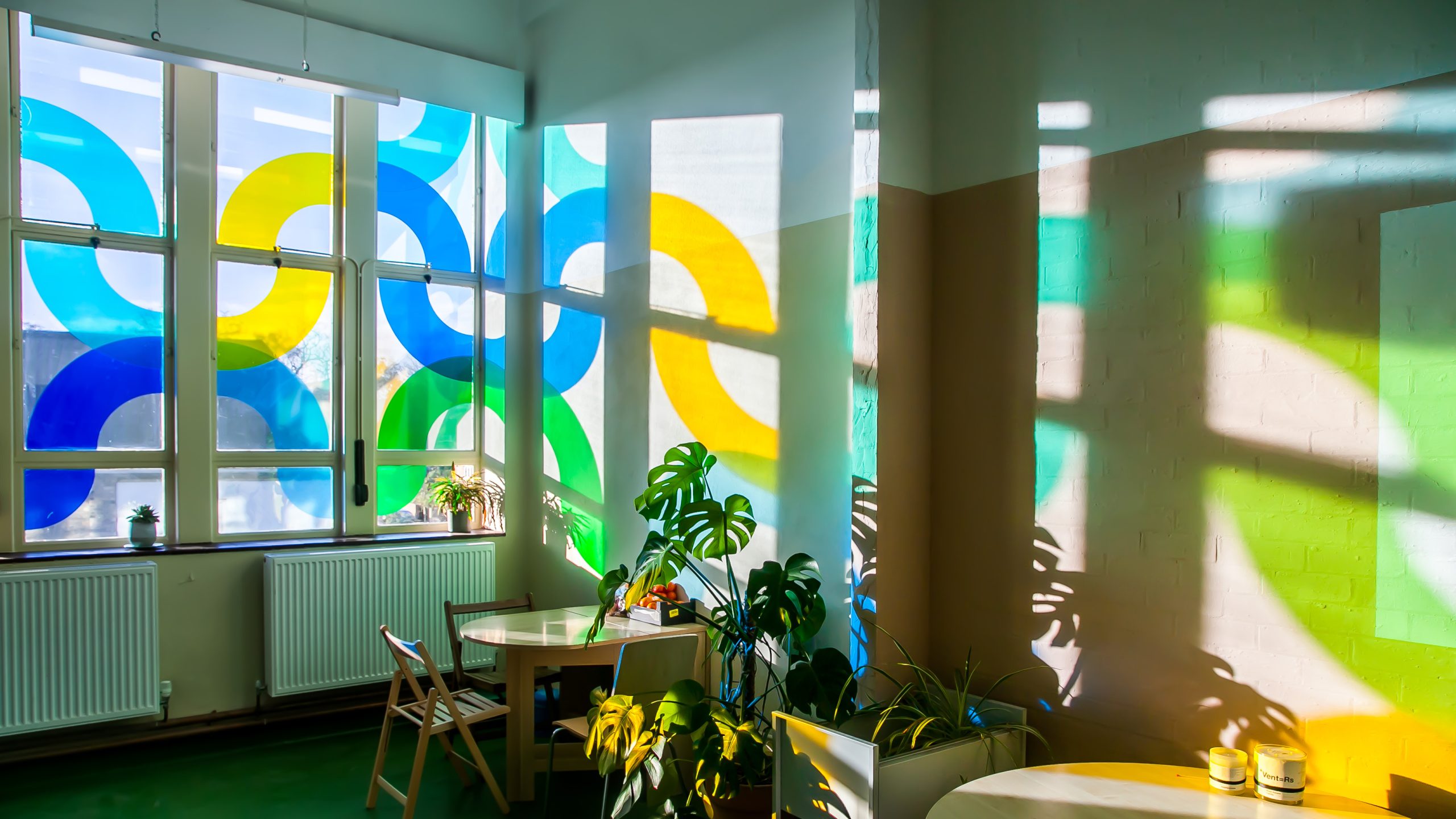
Connection Points, 2021-present, Site-specific vinyl window installation. Created for The Art Station, Saxmundham, Suffolk, UK. (Photo credit: Dean Brannagan)
Court: When and how did you come to the sort of work you’re making at the moment that explores the impact of colour and geometry?
Fiona: My Foundation Course at Leeds College of Art (now Leeds Arts University) was really pivotal. It was a year-long course that was modelled on the Bauhaus style of teaching. We did rotations where we explored colour theory, mark-making and beyond – it was very experimental. After being pushed to do figurative work at school it was extremely liberating. My tutors encouraged me to look at Systems Art and the work of Sol LeWitt which particularly inspired me. There is a lot of logic in how I process the world. Discovering the ability to combine the use of maths, colour and light has been key to the work I make now.

Detail of Modernism (Blue) I, 2023, Screenprint in four colours on Royal Blue 300gsm Canford Card, 42.0 x 29.7 cm, Edition of 5. Photo: Artist Studio.
Court: You work across a range of mediums including screen prints, vinyl installations and more recently stained glass. How do the qualities of each medium impact the way you work and why was stained glass something you were keen to incorporate into your work?
Fiona: My work is always led by the idea or opportunity. I love printmaking, particularly screenprinting as it is very immediate. It’s a great way for me to explore new colour palettes and test motifs. I often go to the print studio to ‘draw’. The compositions I make tend to find their way into my installations. The vinyl installations connect well with the print processes; as I layer the colours in each medium. I love working on a large scale and creating work that will fill a space – it’s also a medium that offers a lot of variations. The stained glass is the most recent addition to my practice. I’m keen to translate the magic of my vinyl installations into glass – the process is much slower but it’s exciting to challenge myself.
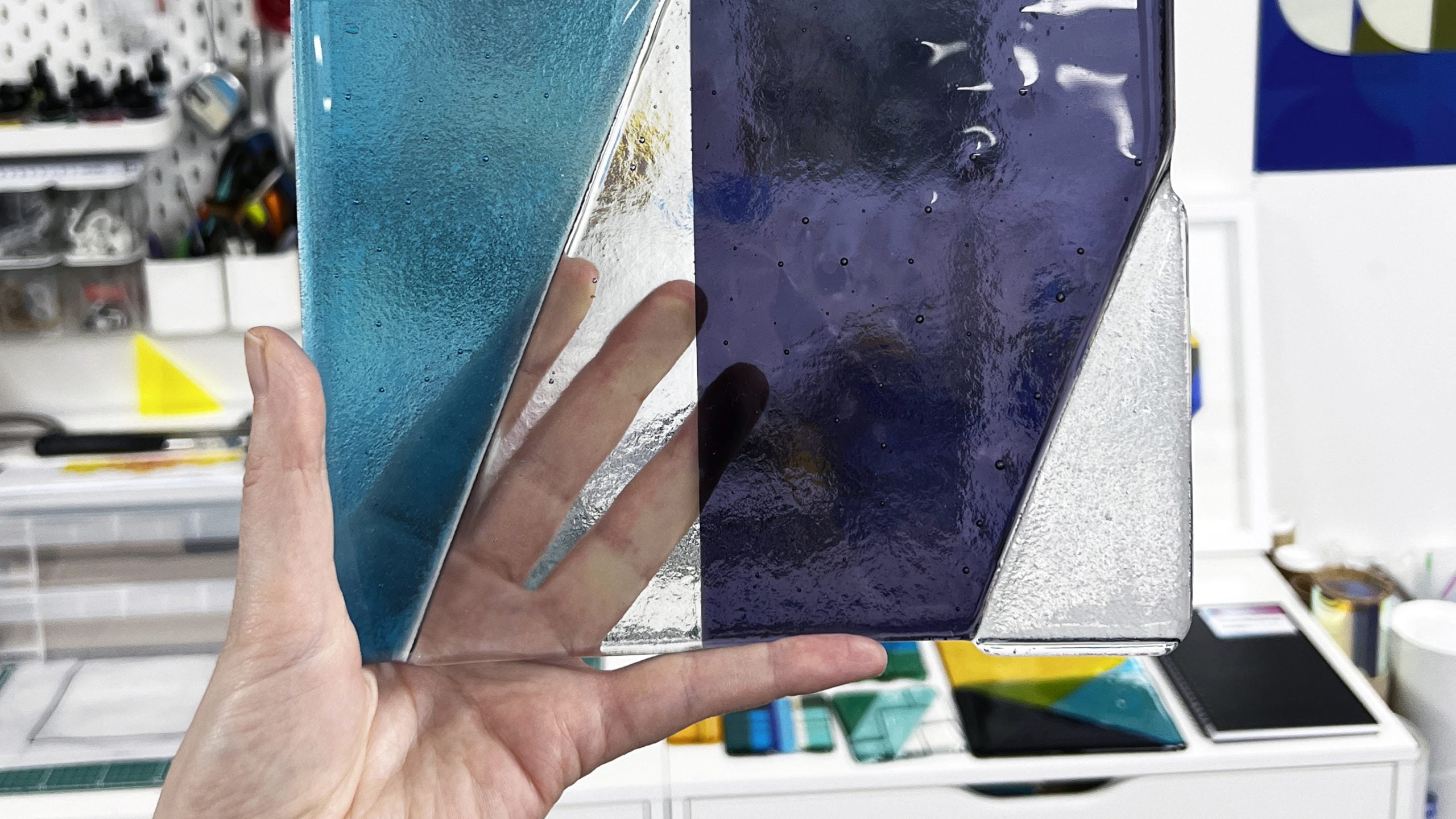
Detailed view of developing ideas with glass in the studio. Photo: Artist Studio.
Court: What did the DYCP funding allow you to do and what sort of impact has it had on your practice?
Fiona: The DYCP funding has been invaluable. For a few years I’ve been dancing around the idea of making work in glass but I didn’t have the budget, knowledge or contacts to help. I aimed to research glassmaking techniques, participate in workshops to make sample works, meet glass artists, fabricators and mentors to make it possible for me to make glass artworks at the end of the funded project. I had a wonderful summer travelling around the UK doing this. It’s opened my eyes and I’ve started making some pieces that show a lot of promise.
Court: Before becoming a full-time artist you were working in a gallery. Can you tell us a bit more about that experience, what you learnt and how you made the transition to full-time artist?
Fiona: I worked for a commercial gallery in Cork Street for almost 7 years as the finance and database manager. It was amazing to meet artists that I used to write essays about when I was a student! It’s hard to teach someone the nuances of the art world – you have to be part of it. I had helpful insight into how a good commercial gallery operates and I gained an understanding of how to behave well as an artist.
The team were very supportive of my practice allowing me to work my holidays around exhibition opportunities and residencies. I had to work very hard to balance everything – I would have struggled to afford my rent and studio without the job. Plus having an income from the day job meant that I didn’t need to make commercially viable artwork. A lot of my early installations were self-funded or with token fees but it meant I could take risks and develop a unique practice that was part of the journey to my current commission based practice.
Court: Having first-hand experience of how galleries operate, do you have any advice for artists wanting to establish a relationship with a gallery?
Fiona: Be easy to work with! It sounds quite obvious but being organised and professional goes a long way. Galleries want to build relationships with artists who make their lives easier. You can be a great artist but if you don’t communicate well or have unrealistic expectations, you are much less likely to be invited to work with them again.
Court: Do you feel your experience in a gallery setting has impacted the work you make or the approach you take?
Fiona: If I’m honest initially I found it depressing to see how people buy art – for example why is a work on paper significantly cheaper than a painting and how is it that one artist’s work is considered ‘more important’ than another? The value systems can feel unbalanced. However, as I got to know more about the artists and saw the level of care that went into supporting their careers, I gained a lot of respect for commercial galleries and their place in the art world.
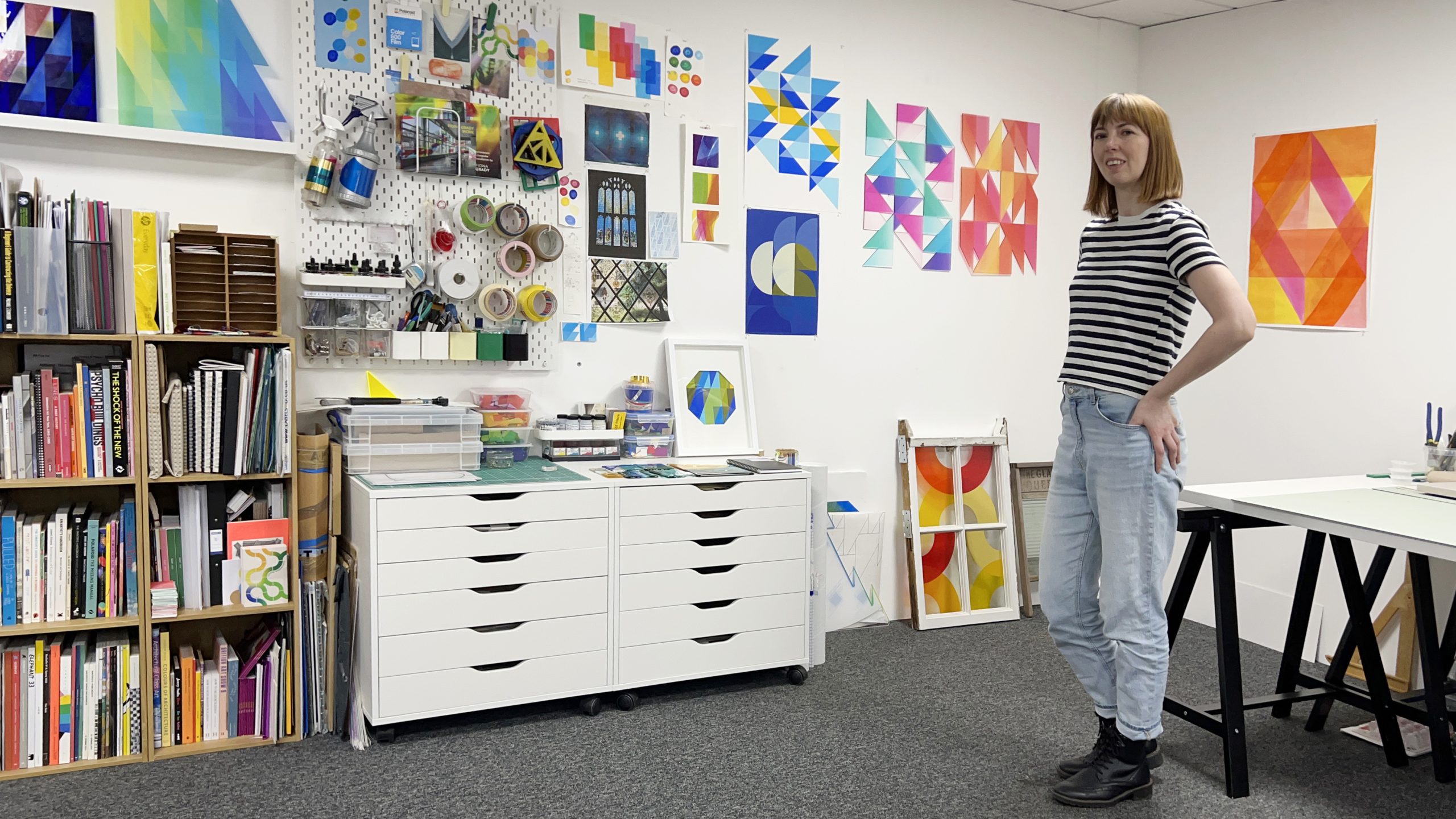
Fiona Grady in the studio. (Photo credit: Artist Studio)
Court: Can you tell us a little about your studio?
Fiona: I’ve been in this studio for a couple of years, it has big windows which is the first thing I look for. My studio is a space to spread out and test ideas. I design and prepare most of my work here alongside storing my archive. The commute is about 45-55 minutes which isn’t ideal. Although I take the DLR through Canary Wharf which is very scenic – especially I time my trip home with the sunset. The travel can be helpful for decompressing after a busy day.
We do have ambient heating in the building which is first for me. I’ve had five studios and moved pretty much once every two years due to the lack of affordable and long term studios in London. I’ve been with the same studio provider, Tannery Arts for a few years. They are great at building a network of professional artists and I’ve met some of my closest friends through their community of studio holders.
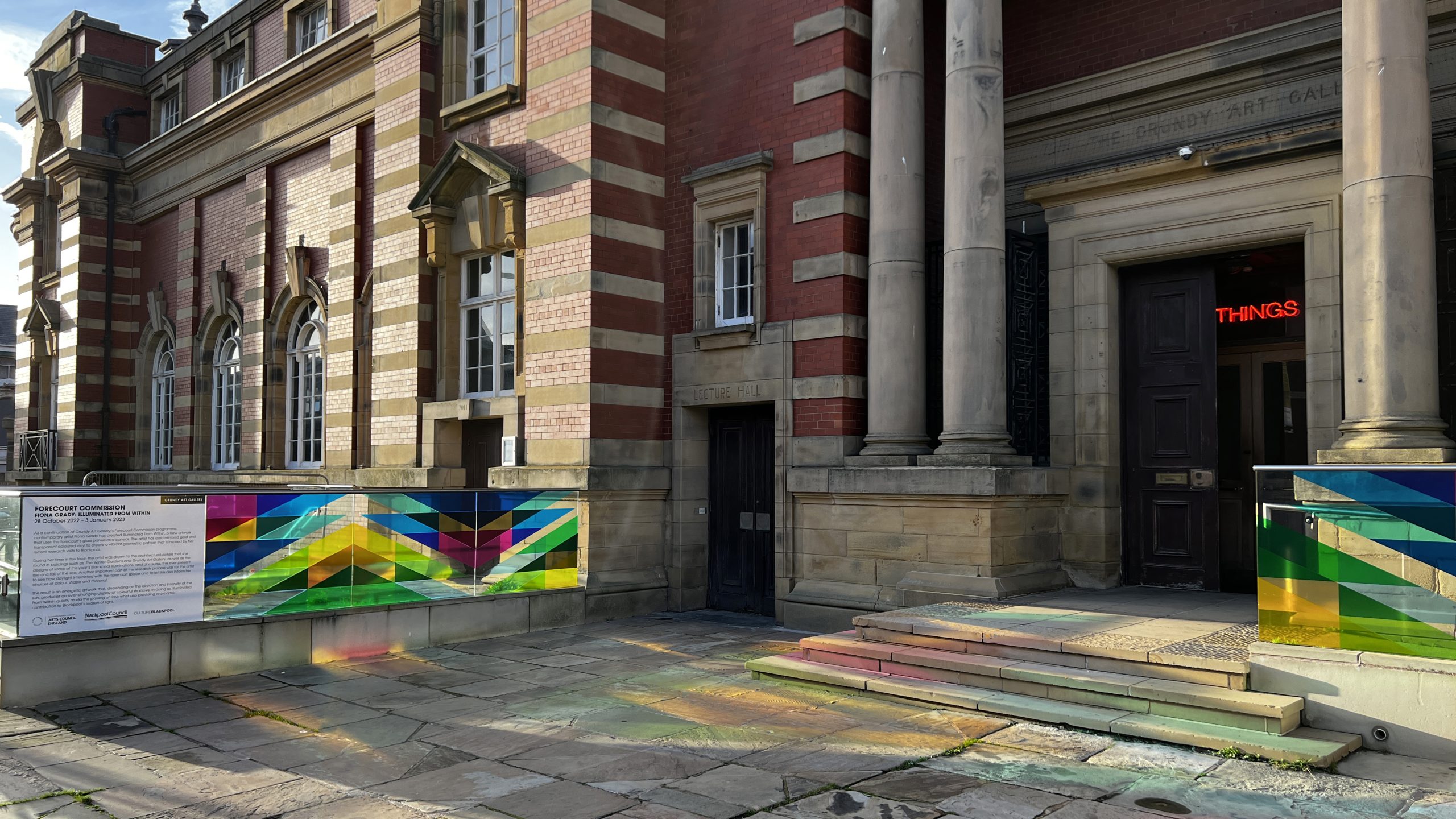
Illuminated From Within, 2022-24, Site-specific vinyl installation created across seven panes of toughened glass. Created for Grundy Art Gallery Forecourt Commission, Blackpool (UK). Photo: Artist’s Studio.
Court: I know you’ve been in London for a while now but you exhibit outside London quite a bit. How do you feel your experiences differ beyond the capital?
Fiona: I am happy to exhibit wherever an interesting opportunity presents itself. It’s lovely when curators get in touch to tell me about their spaces and invite me to work with them. In the last couple of years, I spent a lot of time at The Art Station in Saxmundham and the Grundy Art Gallery in Blackpool [pictured above]. As the communities are smaller you can make much more impact with your work as the choice of exhibitions isn’t overwhelming like London. The curators I’ve worked with have always been very generous, both Clare Palmier, from The Art Station and Paulette Brien, from Grundy Gallery, welcomed me into their communities; inviting me to have meals with their family and friends, alongside connecting me with the local businesses and artists making the adventure sociable and fun, as well as creatively rewarding.
Court: That’s really nice when you feel you can really connect with audiences and have a positive impact. What are you working on at the moment? Do you tend to work on commissions or do you make speculative work?
Fiona: I am working on a couple of commissions at the moment. They’ve not been announced yet but they both relate to the language of stained glass although the outcomes will be very different. I am always making work and developing ideas. The installations rely on collaborating with a venue – as a site-responsive artist there always needs to be starting point for the project. I like working this way. It’s harder to make work without a space in mind but I often have a theme that I’m exploring that can be the root of a new project.
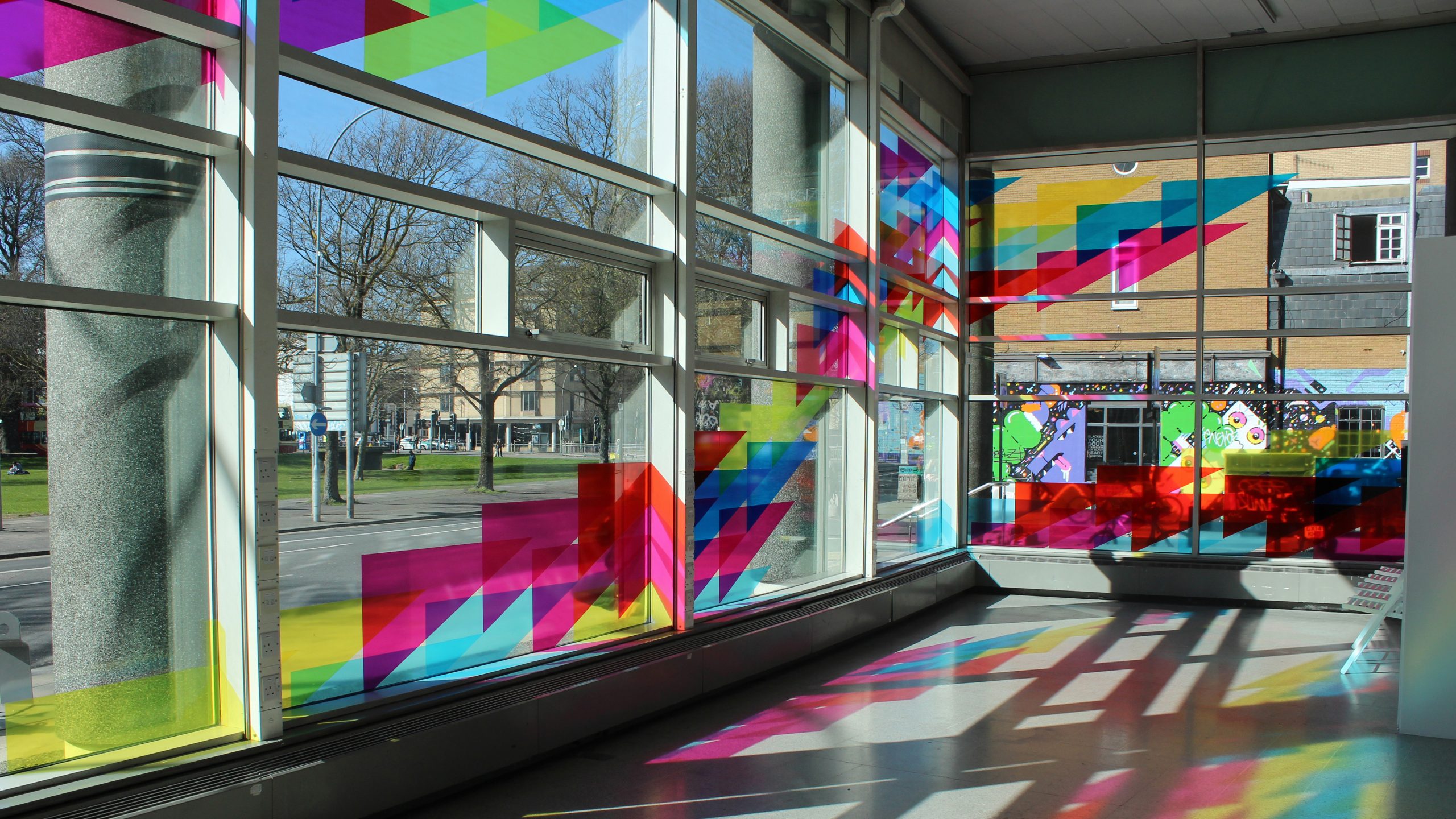
Spectra Waves, 2019, Site-specific vinyl window installation, Overall dimensions: 3.7 m x 25.0 m. Created for the University of Brighton North Gallery, Brighton, UK. (Photo credit: Artist’s Studio)
Court: You’ve had some brilliant installations and exhibitions over the years. What would you say has been your career highlight thus far?
Fiona: There have been so many highlights. I loved my solo exhibition ‘Spectra Waves’ at the University of Brighton as it was the first time I’d made a really significant artwork. The vinyl artwork covered street-facing windows that were approximately 25m wide and 3.5m high. The team were very supportive and gave me full scope to make what I wanted. You can see in the resulting artwork [pictured above] the power of working on that scale.
‘Kaleidoscopic Prisms’ in Canary Wharf is another standout artwork as the building it’s installed on is such an unusual structure. The light bounced all over the place and it was great the see the colours reflected throughout the shopping centre. Due to it’s location I’ve met lots of young people when I’m visiting schools who tell me that they’ve seen it. I always prefer it if my installations can stay in the public realm for a few years – it’s such a lot of work to make the artworks and I like them to be seen by as many people as possible.
Court: Is there a dream project that you would love to make happen?
Fiona: I would love to make a large-scale permanent glass installation. I think my work would look amazing in an airport as a large canopy of colourful intersecting glass shapes. They are always spacious buildings with uninterrupted light – the perfect setting for work of this nature. Otherwise I’d settle for the roof in the British Museum or one of the glass houses at Kew Gardens – you never know!
Court: I want all of those happen! That’s the best way for people to follow your work and see what you’re up to?
Fiona: The best way to keep in touch is to sign up to my newsletter – you can do this via my website www.fionagrady.co.uk. I recently revamped my website to add a News Page and more comprehensive Exhibitions Page; that is regularly updated with my projects. I also post frequently on Instagram with behind-the-scenes teasers, images of artworks, and sources of inspiration.
Court: Fab! Thank you so much. It’s always lovely to talk to you and hear more about your work which really does transform spaces and how people feel in them, which is very exciting. Thanks.
Filed under: Art & Photography
Tagged with: art, art practice, artist, bauhaus, colour, commissions, creative, Experimental, Fiona Grady, glass, innovation, installations, leeds, light, London, memory, printmaking, time
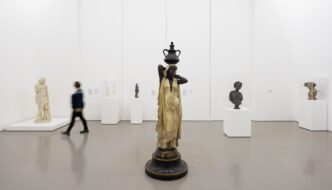
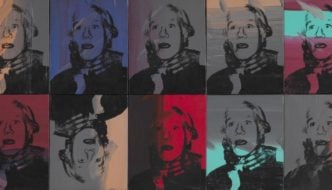
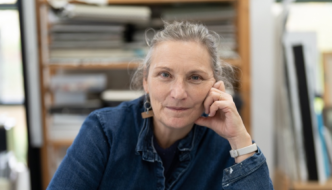
Comments